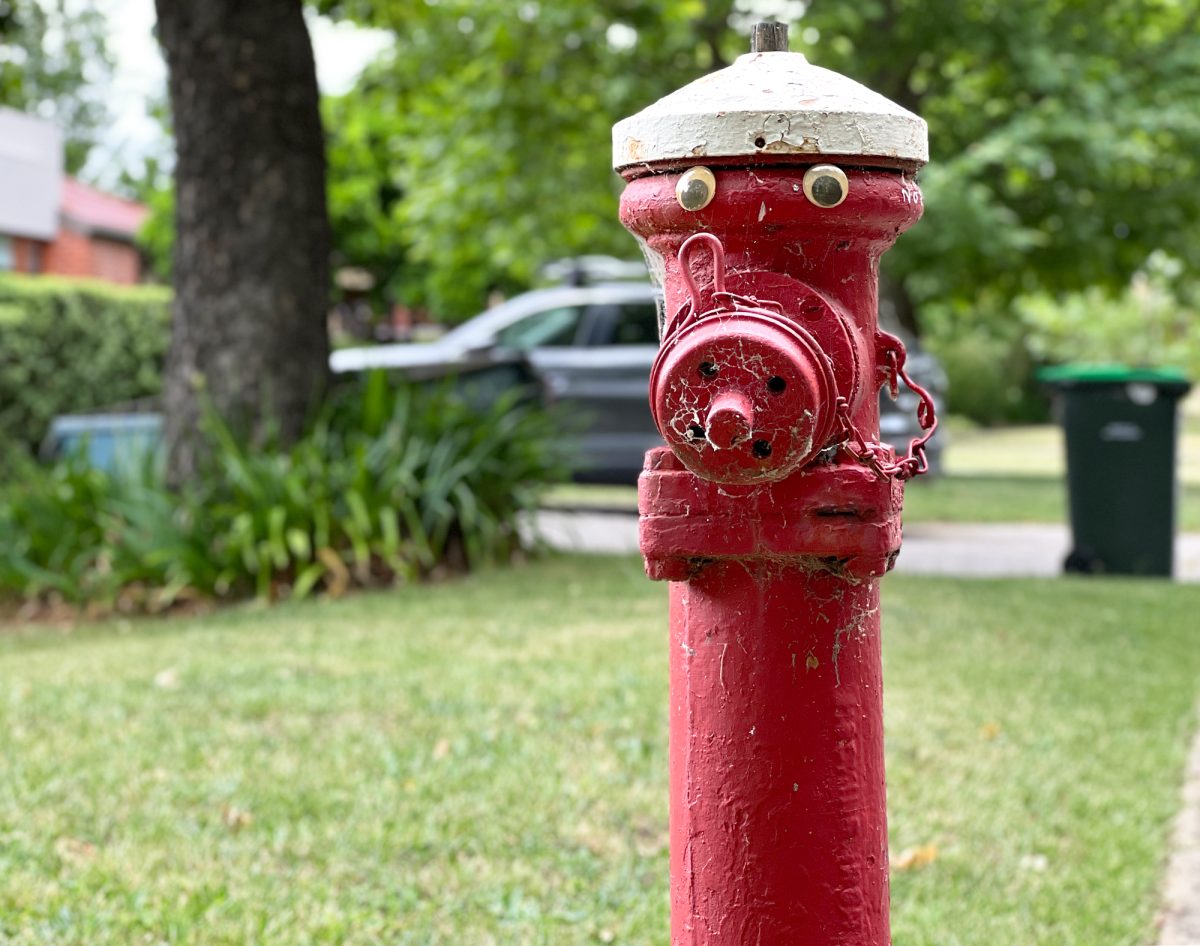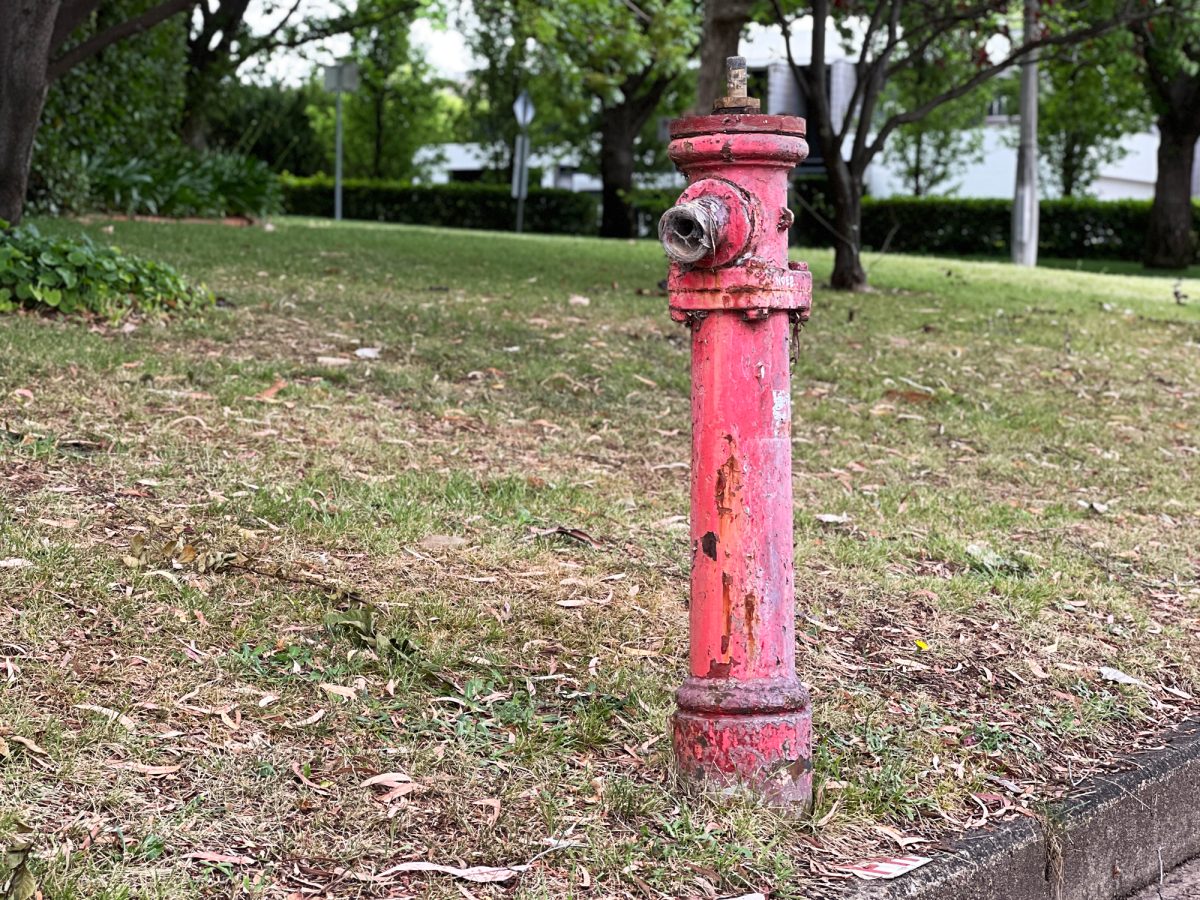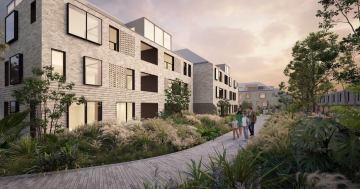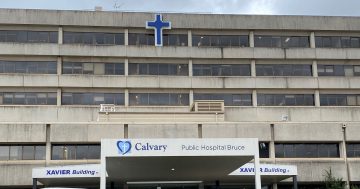
Canberra’s heritage hydrants are part of our local history. Photo: Shayna Siakimotu.
The striking red paint has worn away and they might not have the same star power as Canberra’s brutalist bus stops, but if you ask Icon Water’s environment and sustainability manager Ben Bryant, the pillar hydrants dotted around Canberra’s oldest suburbs are little red icons.
In protected heritage precincts, including Ainslie, Red Hill, Wakefield Gardens housing precinct in Dickson, Corroboree Park housing precinct, Braddon housing precinct, Reid housing precinct, Barton and Forrest, they’re not just for show.
Icon Water is taking advantage of good weather conditions to maintain and restore the most weathered hydrants, many of which are still fully functional fire safety infrastructure. This will be done in stages over time in a way that respects both the form and function of this infrastructure.
There are about 400 pillar hydrants, but only some are in protected areas, where Ben says they form part of heritage fabric.
“This infrastructure is as old as the suburbs they’re in. They’re part of the original municipal infrastructure and part of the local history,” he said.
“It’s great that while they’re a visual part of the character of these suburbs, many continue to be functioning firefighting assets.”
The restoration involves first using a metal brush to clean and prepare the surface by removing any peeling paint and agitating any rust. A primer and sealant undercoat with rust protection elements is then applied.
Finally, the hydrant is painted in keeping with heritage aesthetics: a single coat of “signal red” is applied everywhere but on the cap, which is painted white, and on active assets the screw points and tap shaft are kept clear as access points in case of operation.
Pillar hydrants have long been superseded by the modern in-ground hydrants that appear as nondescript square metal panels on verges by the road, which neatly hide all the infrastructure.
Both functioning and non-functioning hydrants in protected areas that are either damaged or in need of replacement are replaced by these in-ground hydrants.
When replaced, protected hydrants are set back on a concrete plinth about halfway between the curb and footpath, as the traditional placement of pillar hydrants close to the road is no longer in keeping with modern safety standards.
Unprotected hydrants when removed are either recycled or kept in storage as spares in case a heritage hydrant is damaged beyond repair, depending on whether they are in good working order.
“It’s part of Icon Water’s circular economy commitment,” Ben said.
While Icon Water gets to them all eventually, for some people it’s a matter of civic pride. On a few occasions, Icon Water personnel have gone out to conduct a condition inspection only to discover that a civically minded citizen has beautified their local hydrant themselves.

Traditional placement of pillar hydrants close to the road is no longer in keeping with modern safety standards. Photo: Shayna Siakimotu.
“I think it’s wonderful that people recognise them as valuable visual assets in the community and take pride in their appearance,” Ben said.
“They tell a story of where Canberra has come from and how water has always been essential for life and will continue to be so. We want them to be visible.
“Anyone interested in restoring their local hydrant can get in touch with us, and we’d be happy to share any relevant information so they can do so in a way that’s sensitive to their operational and heritage aesthetic aspects.”














